Uncanny X-Men
My first real exposure to comics, probably like most children of the 20th century, was via the “Funnies.” The Funnies were the Sunday six-page spread of full-color comics in the newspaper, the section that (presumably) legions of parents handed their children and said “go read this” before tablets, eReaders and iDevices took over the childhood imagination.
When I was really little, I loved the dainty features of Blondie and the cherubic faces of Family Circle. When I started reading, I favored the adventures of Garfield and his never-ending quest for lasagna; my best friend, on the other hand, had much more sophisticated taste with her hard copy collections of the clever, single-paned Far Side and the beloved Calvin and Hobbes. As a teenager, the sarcastic siblings of Foxtrot were my favorite, and I translated a series of the comics into Spanish for a high school project.
The vibrant colors, styles, and quick, precise quips of the Funnies were always a big Sunday event, but one fateful day in my very early teens, I decided to take my love of comics one step further and ask my mother for something I coveted: a subscription to Marvel’s Uncanny X-Men. I had most likely seen the hard copy X-Men comics in the local mall, or the smoky news/cigar shop downtown owned by one of my dad’s high school classmates. On comic book displays full of costumed superheroes—lone men with dark backgrounds, colorfully-attired men bursting out of clouds, groups of glowering men gritting their teeth and flexing muscles—there was only one title that really drew me: the motley group of supermen and superwomen exploding off the page like a sunburst. How did these super-people work together in a landscape populated with powerful men? I wanted to know their story. My mother looked at me quizzically. “X-Men? The comic book?” My parents were frugal, so I didn’t quite expect her to say yes, but her answer surprised me: “don’t you want something like Teen magazine instead?”
“Um, no! Why would I want that?!”
“Well, there’s clothes in it, and articles for girls.”
“That’s boring! Why can’t I get X-Men?!”
“Those are boy magazines, and they’re ten pages long. I’m not going to pay for that!”
I emerged the dutiful daughter with a subscription to Teen, or YM, or Seventeen. I don’t remember because they were all the same: clothes, boys, embarrassing period stories, and stupid quizzes.
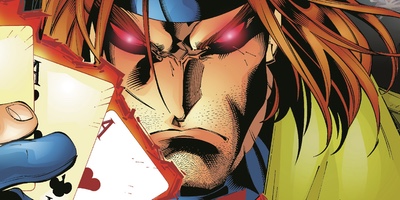
I never managed to get a subscription to any of my favorite comic books, but I do still have a modest collection gleaned from individual visits to the bookstore (there were no comic book stores where we lived.) Joe Madureira’s art was my favorite, and the more subdued and brooding Gambit of his tenure made it all the way to my bedside collage during my freshman year of college, and even into a satirical newsletter I published for my equally-nerdy friends upon the advent of my first real job in Northern Virginia (topic: Who Should Play Gambit in X-Men III? My choice: Ed Burns from Saving Private Ryan.)
As graphic novels grew into a studied genre, critics spoke of the unrealistically-proportioned women, the lack of female-led titles, sexist workforces, and other exclusionary characteristics of the comic book world. Those are certainly all good reasons for industry-wide introspection and transformation, but in my Barbie- and Teen-magazine obsessed white-girl Midwestern bubble, the Uncanny X-Men was the only series that was both inclusive and aspirational for me as a girl. Women of the X-Men were not objects or lone heroines, but active participants in a fraught world where people were sometimes enemies and sometimes friends. They were independent, but used their knowledge and skills to act as part of a team of characters with their own unique contributions. They lived in a world in which women could be maternal yet powerful (Storm in her capacity as a leader,) could be specialized mission-critical scientists (Dr. Moira MacTaggert,) and could learn to manage both their powers and vulnerabilities (the physically powerful yet mentally anguished Rogue.)
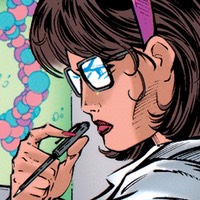
Dr. MacTaggert
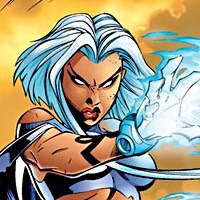
Storm
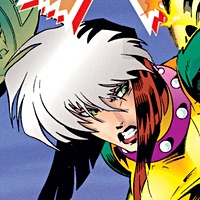
Rogue

Jubilee
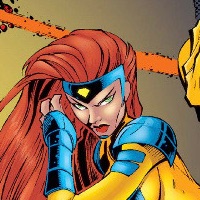
Jean Grey
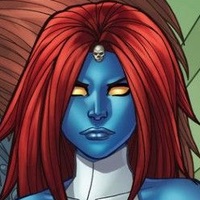
Mystique
The X-Men weren’t simply warriors: they learned, they played, they argued, and they loved. They were continually analyzing and responding to governing bodies and to society in their own unique ways. They made their own choices—some good, some bad—always forging ahead, neither mastered by nor definitively mastering their circumstances. To a girl learning to navigate her teen years in a society paying lip service to girl power—in fact a society with all sorts of imbalances of power—reading Uncanny X-Men was both tool and therapy for experiencing conflict as a woman. I can’t say that I received any of those benefits from Teen magazine.

